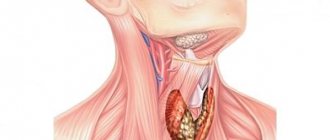About congestion in the throat
Every person has experienced pain, discomfort and a feeling of congestion in the throat many times in their lives.
This is due to the fact that a common cold, which is accompanied by swelling of the pharyngeal mucosa, irritates the nerve endings, creating pain and soreness in the throat. In many cases, an acute process, provided that immunity is not reduced, can be well treated at home in such a way as: gargling, drinking plenty of fluids. And yet, treating an inflammatory disease of the pharynx on your own at home is wrong, and therefore, against the background of such a disease, a chronic disease of the pharynx can develop: pharyngitis, chronic tonsillitis, and even chronic laryngitis. In certain cases, symptoms may appear: anxiety, a lump in the throat and bad breath.
Video treatment of chronic tonsillitis without surgery, 12:47 min.
When you have a sore throat, it is very common to look at your mouth in a mirror. Upon examination, you can see purulent plugs in the throat, white-yellow lumps of a cheesy nature with a rather unpleasant odor, emerging from the mucous membrane of the side walls of the pharynx. Such formations are called caseous plugs, which emerge from the lacunae of the palatine tonsils.
If you suddenly notice plugs in your throat of this nature, then you most likely have chronic tonsillitis. This disease is caused by inflammation in the palatine tonsils. The palatine tonsils are the same tonsils, a collection of lymphoid tissue that is limited from the lateral walls of the pharynx by a capsule. A special feature of the palatine tonsils is their anatomical structure.
What measures should be taken to prevent halitosis?
Visiting the dentist at least twice a year and practicing good oral hygiene is a good way to prevent halitosis. It's important to know that it's not just your teeth and dentures that you should brush. Plaque on the tongue is an environment in which bacteria readily multiply, so it is necessary to get rid of it. To do this, you can use a Colgate® 360° toothbrush, which has a special scraper on the back. To suppress bacteria growth throughout the day, it is helpful to use an antibacterial mouthwash such as Colgate® Total.
Why shouldn't you remove throat plugs yourself?
If chronic tonsillitis has reached the stage of formation of plugs in the throat, then you will not be able to get rid of them on your own, without resorting to the help of a doctor. Quite often, the majority of those who encounter blockages in the throat, given the pain and bad breath, resort to removal on their own. This is achieved by pressing on the tonsil with your fingers, picking out plugs from the lacunae with a spoon or match. This method is categorically inappropriate, since the superficial part of the plug is removed, and not the depth of the tonsil.
Congestion in the throat is the result of pathomorphological processes that occur in the palatine tonsils as a result of chronic inflammation. Also, along with plugs in the throat, liquid fractions of pus may be present. Therefore, in order to get rid of congestion in the throat, it is necessary to influence all important components of the pathogenesis of chronic tonsillitis .
Independent methods of removing plugs in the throat will only aggravate the course of the disease (traumatization of tonsil tissue), which will further activate the scarring process in the area of the lacunae, which ultimately complicates the process of evacuation of purulent plugs. Neither all kinds of rinsing, nor other methods of self-medication will help properly, which, on the contrary, can ultimately lead to decompensation of chronic tonsillitis and the creation of plugs in the throat.
Causes of postnasal drip
The causes of constantly accumulating mucus in the throat can be infectious or non-infectious. These include:
- Inflammatory diseases of the nasopharynx and larynx (sinusitis, pharyngitis, laryngitis). The increased production of mucous secretion during this period is associated with the body’s attempt to clear the airways of bacteria and viruses, thereby speeding up recovery. The fact that mucus is secreted abundantly in this case, on the contrary, is a variant of the norm. Such mucous masses do not interfere, but help get rid of pathogens.
- Chronic diseases of the upper respiratory tract. These diseases cause inflammatory processes in the nasopharynx, resulting in the formation of a constant source of infection here.
- Diseases of the lower respiratory tract (bronchitis, pneumonia, tuberculosis).
- Allergic reactions to an external irritant. An allergy can be accompanied by a copious accumulation of phlegm, which is annoying and makes you want to constantly swallow it.
- Disorders of the gastrointestinal tract, in which the contents of the stomach are thrown back into the esophagus and further into the pharynx (gastroesophageal reflux disease, gastritis, ulcer).
- Features of the structure of the nasal cavity (curved nasal septum, enlarged nasal turbinates).
- Adenoids.
- Poor nutrition - eating too fatty or spicy foods irritates the gastrointestinal tract and can provoke increased secretion production.
- Bad habits. Tobacco smoking and alcohol abuse lead to burns of the pharyngeal mucosa. The body tries to get rid of the harmful effects of harmful substances by intensively producing mucous masses.
- The entry of foreign objects into the nasal cavity is a common cause of the accumulation of mucous masses in the throat of children, since children, while playing, can insert beads, small parts of toys, etc. into the nasal passages.
- Poor environmental conditions in the place of residence - polluted air and dust. In this way, the body tries to get rid of harmful particles trapped in the air.
The sooner the cause of this condition is determined, the sooner effective treatment for the throat will be prescribed and carried out.
Causes of purulent plugs in the throat
Unpleasant sensations and pain in the throat accompany any person throughout the illness. The symptoms and consequences of a disease such as a congestion in the throat may be different for everyone, and are determined only by a medical specialist. Diagnostics involves a blood test, smear and other medical procedures that allow you to correctly establish a diagnosis and prescribe effective treatment. Redness and sore throat can be eliminated at home, but purulent plugs in the throat of various etiologies certainly require special treatment and attention.
The cause of purulent plugs in the throat can be different. But the result of any cause may be inflammation of the tonsils. The tonsils are lymphoid tissue that protect the throat from various infections. A severe inflammatory process in the tonsils can be caused by various microbes, which is why a correct diagnosis can only be made by obtaining a smear of the larynx.
Sore throat can be caused by microbes such as streptococcus, pneumococcus, staphylococcus or adenoviruses, and diphtheria - by diphtheria microbes. Only timely treatment of purulent plugs in the throat will help avoid serious complications .
Why is mucus formed?
The production of mucous masses by the nasopharynx is a natural phenomenon. They perform a moisturizing and protective function. Mucous masses trap foreign particles, pollen, and bacteria that enter with the air and prevent them from descending lower into the trachea and lungs. As soon as these foreign agents enter the mucous membranes, the amount of secretion produced increases, and the person has a desire to clear his nose or cough. When the irritant is removed from the body, secretion production returns to its previous level.
Normally, a person does not notice the process of formation of mucous masses - they are swallowed along with saliva.
The accumulation of mucus in the throat becomes noticeable when it is produced continuously and thickens. The patient directly feels how mucous masses flow along the back wall of the pharynx and accumulate in it. During the daytime, the accumulation of sputum is not so disturbing - it is swallowed and does not greatly irritate the cough receptors. But if you take a horizontal position, for example, at night while sleeping, the mucous masses cannot freely pass inside and stagnate in the throat. This causes severe coughing attacks, which can even provoke vomiting.
When a person comes to an otolaryngologist and says: “I constantly swallow mucus in my throat,” the first thing the ENT doctor will do is find out why mucus accumulates in the throat.
Only after establishing the true cause of mucus in the throat, it will be possible to prescribe the correct treatment.
Purulent plugs in the throat in children and adults
In children of younger and older age categories, sore throat can often be observed with purulent plugs in the throat. Follicular and lacunar tonsillitis is marked by yellow and white purulent plugs; blisters with pus cover almost all the tonsils. The disease is accompanied by headaches, fever, general weakness, and loss of appetite. There are strong changes in the blood test, they are associated with a high content of leukocytes.
If there is suddenly a suspicion of diphtheria sore throat, the sick child should be hospitalized immediately. This disease is very dangerous with all sorts of complications in the future. Diphtheria is marked by purulent gray deposits, which cause great pain when removed. Suspicion of such a disease may arise already at the first examinations.
Parents often have questions about tonsil removal; such advice can only be given by the attending physician. Often, a child can simply “outgrow” tonsil disease, but if there is a serious risk of complications in the heart, joints and kidneys, then it is worth consulting with experienced specialists before making a decision.
Adult patients often turn to the doctor with the same questions about purulent plugs in the throat. A person constantly suffers from sore throat, pharyngitis, and purulent plugs in the throat are caused by the same diseases. Reduced immunity, poor environmental conditions, improper self-medication - all this causes chronic tonsillitis (chronic inflammation of the tonsils). With periodic exacerbations, chronic tonsillitis manifests itself as sore throat. The constant appearance of purulent plugs in the throat and bad breath bring anxiety and exhaust the patient.
An extremely dangerous complication is in the form of a peritonsillar abscess, which turns into phlegmon of the neck, which threatens the patient in case of negligence in the treatment of chronic tonsillitis. Diseases of the joints, heart and kidneys are very dangerous, as complications after previous diseases associated with the presence of purulent plugs in the throat.
Mucus in the throat and nose with an unpleasant odor!
Foul-smelling mucus in the nose and throat is most often caused by a sinus infection (sinusitis) or postnasal drip (mucus running down the nasopharynx and into the throat). Since in these conditions a favorable environment is created for bacteria to multiply in the mucus, which leads to the addition of a foul odor or a nasty taste.
The chronic form of sinusitis manifests itself in thick discharge that has an unpleasant odor and taste. Congestion or inflammation inside the nose is a symptom of rhinitis, which most often causes postnasal drip, when mucus drains from the nasopharynx into the throat.
Thick mucus is an ideal breeding ground for anaerobic bacteria, which is responsible for strong bad breath (known as halitosis). Dentists say that brushing your teeth does not eliminate bad breath caused by mucus draining from the nasopharynx.
Foul-smelling mucus associated with a temporary cold or allergic reaction can be effectively treated with a variety of home remedies that focus on loosening, thinning, and drying out the secretions. A known method to eliminate the problem is to drink plenty of warm drinks, such as soups and herbal teas.
Treating the sources of excess mucus production and eliminating the proliferation of anaerobic bacteria that thrive in this type of environment is the best way to prevent and eliminate mucus or bad breath associated with draining into the nasopharynx.
Although rare, some may experience green or black crusts inside the nose that bleed and produce a foul odor. This is a sign of a disease such as chronic atrophic rhinitis (ozena).
Sinusitis is a common cause of an inflamed and blocked nasal passage, and can produce foul-smelling mucus. This is a condition in which the lining of the sinuses becomes inflamed. The inflammation and swelling is usually caused by a viral infection and often improves within two or three weeks.
This is a very common disease. In temperate climates, the disease affects about 5-15% of the adult population every year.
Sinuses (paranasal sinuses) are small air pockets that are located in the forehead, cheekbones and eyes.
They protect the body by capturing microbes. Bacteria or allergens can cause too much mucus to be produced, which can block the sinuses from opening. So most people will experience a runny nose when they have a cold or allergies.
The buildup of mucus can promote the growth of germs in the sinus cavity, leading to bacterial or viral infections. Most are viral and may clear up in a week or two without treatment. The accumulation of secretions in the nasal passage and throat can cause bad breath and foul-smelling mucus.
Corticosteroid drops or spray may be used to treat such inflammations. Corticosteroids, also called steroids, are a group of medications that can help reduce inflammation. If swelling or inflammation persists, your doctor may prescribe another treatment option.
Other symptoms, such as a stuffy nose, can be treated by applying a warm compress, and the pain can be relieved with painkillers. Antibiotics may sometimes be used to treat a mild bacterial infection that accompanies sinus inflammation.
Signs and symptoms:
- Thick and greenish nasal discharge
- Nasal congestion that causes difficulty breathing
- Pain, swelling, tenderness and pressure around the eyes, cheeks, nose and forehead
- Strong headache
- Ear pressure
- Fever and fatigue.
Tonsillitis
Another possible cause is tonsillitis, an inflammation of the tonsils, the oval pads of tissue at the back of the throat. Symptoms of the disease include swollen tonsils, sore throat, difficulty swallowing and tender lymph nodes on the sides of the neck.
Tonsillitis is often caused by a virus, and a bacterial infection can sometimes cause swelling. The correct treatment depends on the underlying cause of the disease. Therefore, to receive proper treatment, it is necessary to establish a diagnosis quickly and accurately. A doctor may recommend surgery when bacterial tonsillitis occurs too frequently, does not respond to other treatment options, or has other serious complications.
Inflammation may affect other areas of the throat, such as the adenoids and lingual tonsils. There are different variations of the disease: acute, recurrent and chronic. In all three variants, sore throat and problems with swallowing are observed.
Postnasal drip
Nasopharyngeal drip, also known as postnasal drip, occurs when the nasal mucosa is oversecreted. Excess mucus accumulates in the throat or back of the nose. It is responsible for hydration and also helps to trap and destroy foreign organisms such as bacteria and viruses before they can cause infection.
With normal secretion, mucus is invisible, it mixes with saliva and flows harmlessly behind the throat, and the person swallows it. When the body produces more of it and it becomes thicker than usual, it becomes more noticeable. This usually occurs during inflammation, most often during rhinitis.
The accumulated mucus also provides a good breeding ground for bacteria that cause bad odor. When excess secretion comes out of the nostrils, it causes a runny nose as it flows down the back of the throat - called postnasal drip.
The problem can be caused by colds, flu, allergies, sinus infections, pregnancy, or changes in weather.
Depending on the diagnosis, possible treatments include:
- Antibiotic to treat bacterial infection
- Surgery in cases of chronic sinusitis
- Medicines and spray against allergies
- Antacid when gastroesophageal reflux disease is the problem.
Nasal polyps
Nasal polyps are soft, painless, irregular growths on the lining of the nose. They occur as a result of chronic inflammation due to asthma, recurrent infections, allergic reactions and sensitivity to drugs or immune disorders.
Small polyps are asymptomatic, but large polyps or a group of polyps can lead to breathing difficulties due to blockage of the nasal passage, and in some cases also loss of the sense of smell and frequent infections. Although they are more common in adults, they can affect a person at any age.
Your doctor may prescribe medication to shrink or eliminate nasal polyps, but surgery is sometimes required to remove them. They may return frequently even after consistent treatment. Unlike polyps that form in the colon or bladder, nasal polyps are rarely cancerous. They are also not painful to the touch.
Symptoms:
- Runny nose
- Annoying snoring
- Decreased sense of smell
- Severe headaches and facial pain
- Pain in upper teeth
- Postnasal drip.
Inflammatory nasal discharge in adults with odor
In adults, a common cause of foul-smelling mucus is rhinitis, which is an inflammation of the nasal passage. This condition is known to cause a runny nose and nasal discharge.
Rhinitis can be temporary, when it is caused by an allergic reaction, or chronic, when symptoms last more than six weeks. In moderate cases of congestion, the condition may improve on its own; in chronic or severe cases, it is necessary for a doctor to diagnose the condition and prescribe treatment.
In an adult, another common cause of the problem may be sinusitis - inflammation of the sinuses. Sinuses are air-filled cavities located behind the forehead, eyes, cheekbones, and bridge of the nose. They filter the air you breathe, using mucus to trap dirt, bacteria, and other potentially harmful particles.
The sinuses become inflamed or swollen during infections or allergic reactions. The accumulation of mucus creates a favorable environment for bacteria to grow and multiply, resulting in a foul-smelling bacterial infection.
A sinus infection is manifested by the following symptoms:
- Nasal congestion
- Bad breath
- A sore throat
- Thick yellow or green mucus that appears in the nose or throat
- Cough, especially at night
- Dulling of taste and smell.
Mild cases of the problem in adults may improve on their own. In severe cases caused by allergic rhinitis, sinusitis or postnasal drip, immediate medical attention is recommended. People with allergies or a weak immune system are most likely to develop a sinus infection.
Treatment involves not only monitoring and managing symptoms, but also getting rid of the underlying cause of the disease. For allergic rhinitis or sinus inflammation, it is important to have a doctor diagnose the problem and prescribe the necessary medications. In this way, the risk of complications can be minimized.
After a medical examination, treatment will depend on the underlying cause of the disease or the severity of symptoms.
Antibiotics
Sinusitis caused by a viral infection does not require antibiotic treatment. For a bacterial infection, an oral antibiotic may be used. It can be suspected if there is facial pain, nasal discharge that resembles pus, and other symptoms that persist for more than a week. Infection may also be suspected when the condition does not respond to other medications.
Acute bacterial infection is treated with antibiotic therapy. Antibiotics work by killing or preventing the growth of bacteria that can cause a sinus infection. When they are used for treatment it is necessary to remember that:
- The number of days you use antibiotics depends on your overall health
- The choice of drug depends on the body's reaction to it
- The medication may be used with another drug such as a decongestant
Decongestant
A nasal spray can quickly help relieve congestion and swelling. There are many such products on the market.
But they also have their drawbacks, due to which they cannot be used for more than a few days. Most decongestant sprays contain the preservative benzalkonium chloride, which causes toxic reactions in the nose, eyes, ears and lungs and can worsen the symptoms of allergic rhinitis. Thus, a drug with this substance in its composition will be effective immediately, but when the symptoms return within a day or two, they will be worse than before use.
Nasal steroid spray
Nasal steroid sprays are commonly used medications that are used to relieve swelling in the nose. The medicine can also be used for allergies such as hay fever. Steroid sprays are also good for relieving symptoms of inflammation caused by other conditions.
A nasal corticosteroid spray reduces swelling and mucus in the nasal passage. It may also be effective in relieving associated symptoms, such as a runny nose, sneezing, congestion, itching, or swelling of the nasal passage.
Painkiller anti-inflammatory drugs
Paracetamol, aspirin, ibuprofen and other NSAIDs can be used to help combat the fever and headaches that may accompany swelling and inflammation. Various brands of pain relievers can be found in pharmacies.
Surgery for chronic sinusitis
Sometimes surgery may be performed due to a complication of sinusitis, which may include the formation of pus in and outside the sinus. The purpose of the operation is to drain the sinuses:
- Removing infected, swollen or damaged tissue
- Removing swollen bone to create a wider opening to drain mucus from the sinuses
- Getting rid of formations inside the nose
- Removing a foreign object blocking the nasal passage.
Surgery does not always completely correct the problem, and some people will require a second operation. When treating a swollen, infected nasal passage, the surgery becomes more effective when used in conjunction with another medication.
Folk remedies
Peppermint oil.
It is suitable for oral and topical use and has antimicrobial properties. Along with lavender, peppermint oil may be one of the most versatile essential oils in the world.
Drinking warm liquids can also help keep your body temperature normal.
and relieve some cold symptoms, such as sneezing and runny nose.
Salt.
You can also try gargling, or even better, rinsing the nasopharynx with salt. It has strong antibiotic, anti-inflammatory and antiseptic properties that help fight bacterial infections in the mouth.
Ginger.
Although the root of this plant does not help stop the discharge process itself, it can help get rid of the mucus that remains after the disease has been treated. It is an ancient remedy that has been used in many cold and cough medicines.
Raw honey.
It is an antibacterial, anti-inflammatory and antifungal home remedy. It also contains antioxidants and flavonoids, and not only reduces mucus secretion, but also soothes irritated airways.
This article is for informational purposes only. An otolaryngologist at the Company’s Polyclinic can tell you in more detail about the prevention of ENT diseases (mentioned in this publication).
In your free time, call the call center at 8 (495) 356 3003 and make an appointment with an otolaryngologist.
The clinic "Innovative Technologies" LLC thanks you for
that you took the time to read this information.
Treating throat congestion
Congestion in the throat and bad breath can be so distressing that patients are often ready to resort to any measures, even removal of the tonsils (tonsillectomy). Such a solution in certain cases is very acceptable, but the point is that any operation must be seriously justified. Sometimes, having rushed to remove the tonsils and upset the anatomy and the natural protective mechanisms of the pharynx, in the near future a person may encounter a form of chronic pharyngitis, which is very difficult to treat and intensively worsens the quality of life. That is why, if you have plugs in your throat, do not under any circumstances delay removing your tonsils.
Congestion in the throat is not an indication for tonsillectomy, taking into account all the canons of otorhinolaryngology. With the right approach to treating purulent plugs in the throat, you can do without surgery, solving the problem in a conservative way . The ENT-Asthma clinic has developed and successfully used an effective method for treating chronic tonsillitis, consisting of a set of procedures. All actions are aimed, first of all, at eliminating all the important links in the pathogenesis of this disease, which allows you to actually get rid of congestion in the throat, preserving the tonsils.










